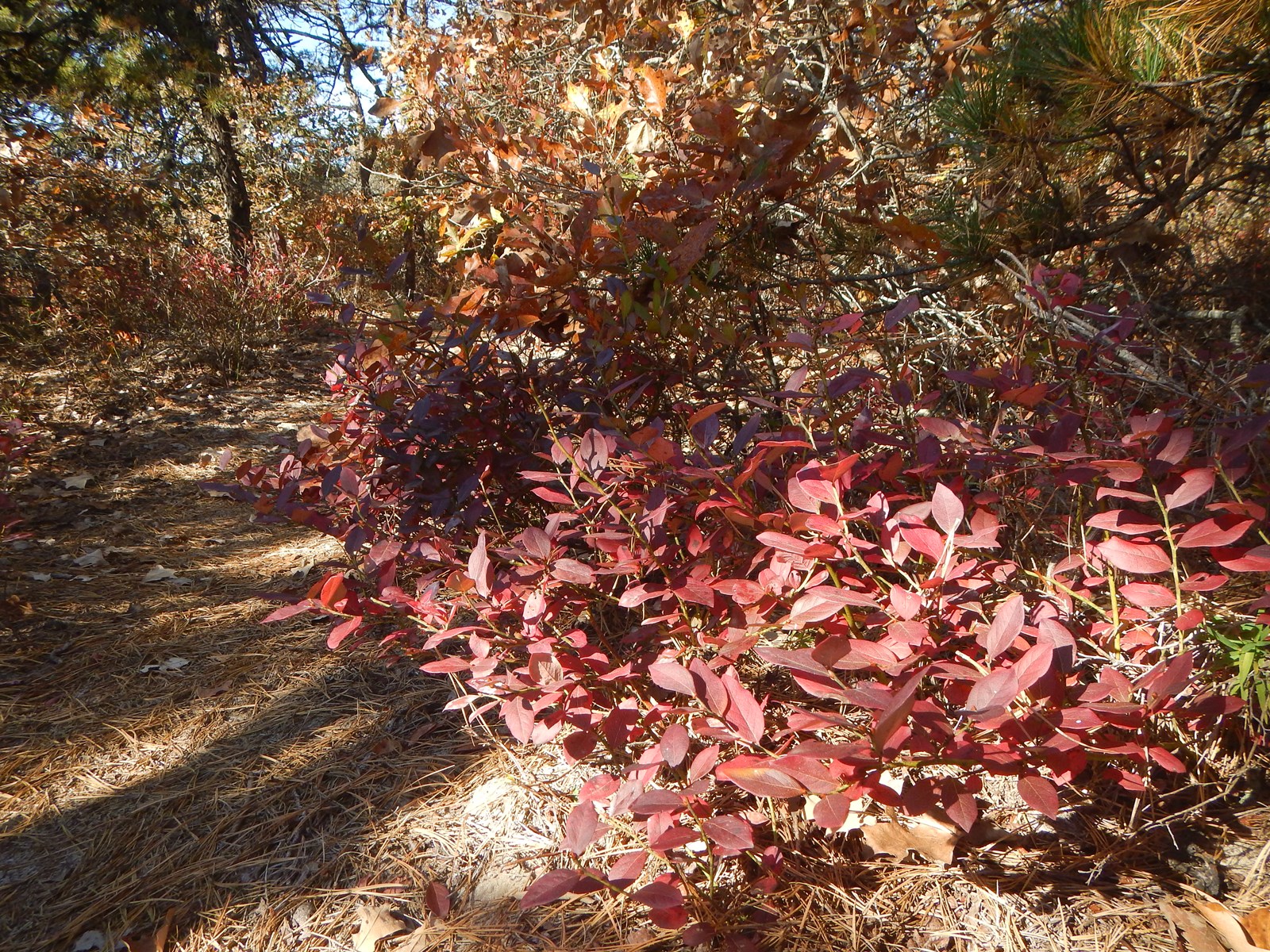The Central Pine Barrens is located in Suffolk County, New York, the state’s southeastern most county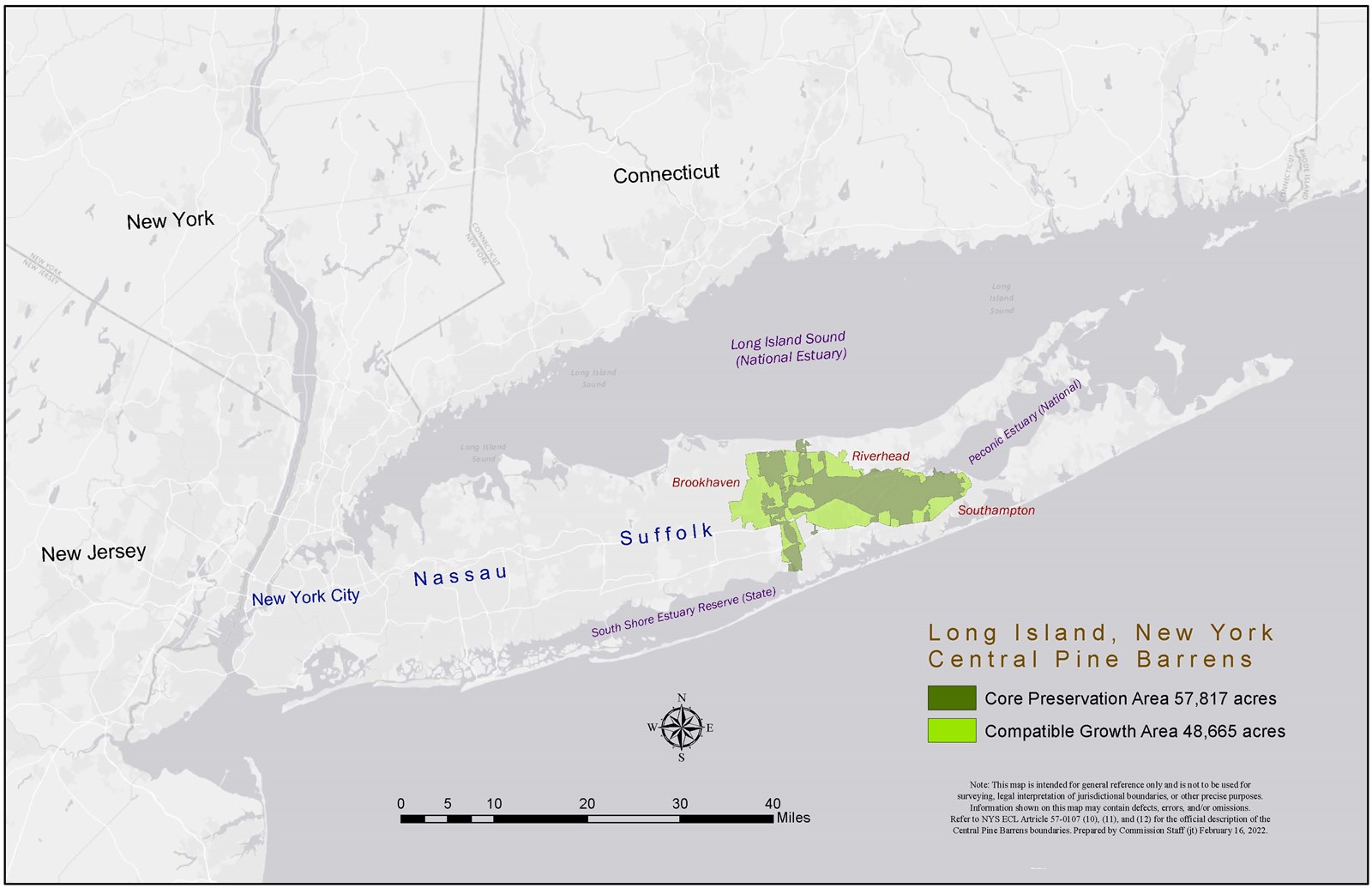 , occupying the central and eastern end of Long Island. The region, designated by New York State, contains more than 900 square miles of terrestrial and aquatic environments. The 105,000-acre Central Pine Barrens area encompasses portions of eastern Brookhaven Town, southern Riverhead Town and western Southampton Town. It also touches on and comprises portions of the watersheds for two of the four major rivers on Long Island, the Carmans and Peconic; in fact, the headwaters of both rivers are located within the Central Pine Barrens. The region also interfaces with significant marine areas, extending from the federally-designated Peconic Estuary on part of the region’s northern boundary adjacent to Flanders Bay, southward to the Great South Bay, which is part of the South Shore Estuary Reserve. The Central Pine Barrens is also a subset of the larger Pine Barrens Maritime Reserve, which lies east of Patchogue-Mt. Sinai Road in central Brookhaven Town and extends north to the Long Island Sound, south to the Atlantic Ocean and eastward to the eastern tips of both the North and South Forks of Long Island’s East End. As such, the Central Pine Barrens plays a key role in the ecological health and surface water quality of these important estuaries.
, occupying the central and eastern end of Long Island. The region, designated by New York State, contains more than 900 square miles of terrestrial and aquatic environments. The 105,000-acre Central Pine Barrens area encompasses portions of eastern Brookhaven Town, southern Riverhead Town and western Southampton Town. It also touches on and comprises portions of the watersheds for two of the four major rivers on Long Island, the Carmans and Peconic; in fact, the headwaters of both rivers are located within the Central Pine Barrens. The region also interfaces with significant marine areas, extending from the federally-designated Peconic Estuary on part of the region’s northern boundary adjacent to Flanders Bay, southward to the Great South Bay, which is part of the South Shore Estuary Reserve. The Central Pine Barrens is also a subset of the larger Pine Barrens Maritime Reserve, which lies east of Patchogue-Mt. Sinai Road in central Brookhaven Town and extends north to the Long Island Sound, south to the Atlantic Ocean and eastward to the eastern tips of both the North and South Forks of Long Island’s East End. As such, the Central Pine Barrens plays a key role in the ecological health and surface water quality of these important estuaries.
The Central Pine Barrens is Long Island’s most significant wilderness and is the largest remnant of a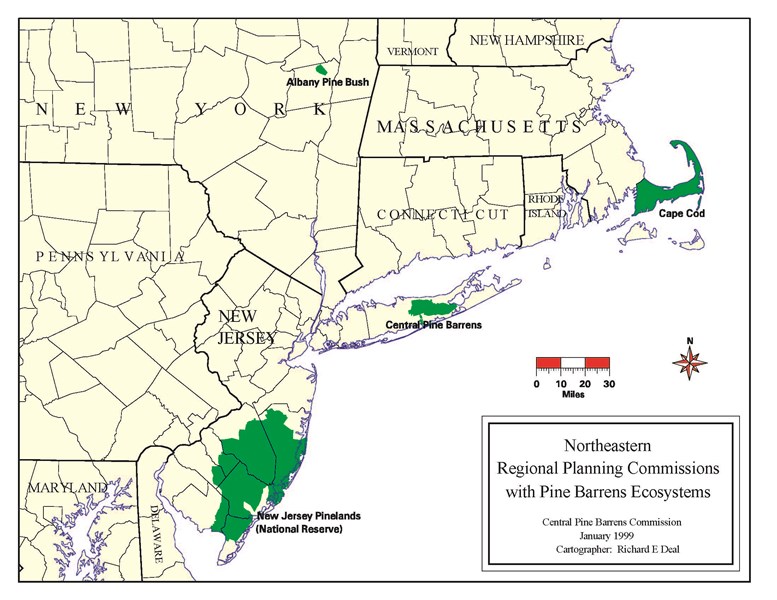 primarily forested area thought to have once encompassed more than a quarter million acres. It is one of several pine barrens areas in the Northeast, with others located in New Jersey, upstate New York and on Cape Cod. The region contains a rich mixture of terrestrial and aquatic ecosystems, interconnected surface and ground waters, recreational places, historic locales, farmlands and residential communities. In its terrestrial (upland) areas, forests are often dominated by various species of oaks, including scarlet and white oak, as well as pitch pine, the main conifer found there. The area hosts many unique vegetational communities, including the globally-rare dwarf pine plains, which are characterized by a much smaller variety of pitch pine; scrub-oak dominated shrublands, where thickets of this low-growing, bush-like tree can be virtually impassible; and herbaceous grasslands and meadows. On warm days in the Central Pine Barrens, one can experience gentle breezes wafting the natural fragrances emitted by pine, sweet fern and bayberry and the pleasant scents of other vegetation through the air.
primarily forested area thought to have once encompassed more than a quarter million acres. It is one of several pine barrens areas in the Northeast, with others located in New Jersey, upstate New York and on Cape Cod. The region contains a rich mixture of terrestrial and aquatic ecosystems, interconnected surface and ground waters, recreational places, historic locales, farmlands and residential communities. In its terrestrial (upland) areas, forests are often dominated by various species of oaks, including scarlet and white oak, as well as pitch pine, the main conifer found there. The area hosts many unique vegetational communities, including the globally-rare dwarf pine plains, which are characterized by a much smaller variety of pitch pine; scrub-oak dominated shrublands, where thickets of this low-growing, bush-like tree can be virtually impassible; and herbaceous grasslands and meadows. On warm days in the Central Pine Barrens, one can experience gentle breezes wafting the natural fragrances emitted by pine, sweet fern and bayberry and the pleasant scents of other vegetation through the air.
Much of the area is comprised of vegetation and ecological communities which are adapted to and dependent on fire, which releases nutrients, triggers germination of seedlings and eliminates competing species. Numerous wetlands are found throughout the Central Pine Barrens including rare and unique coastal plain ponds, whose surface water levels fluctuate with the water table and the shorelines of which often contain a multitude of rare plants, some of which are found only on Long Island.
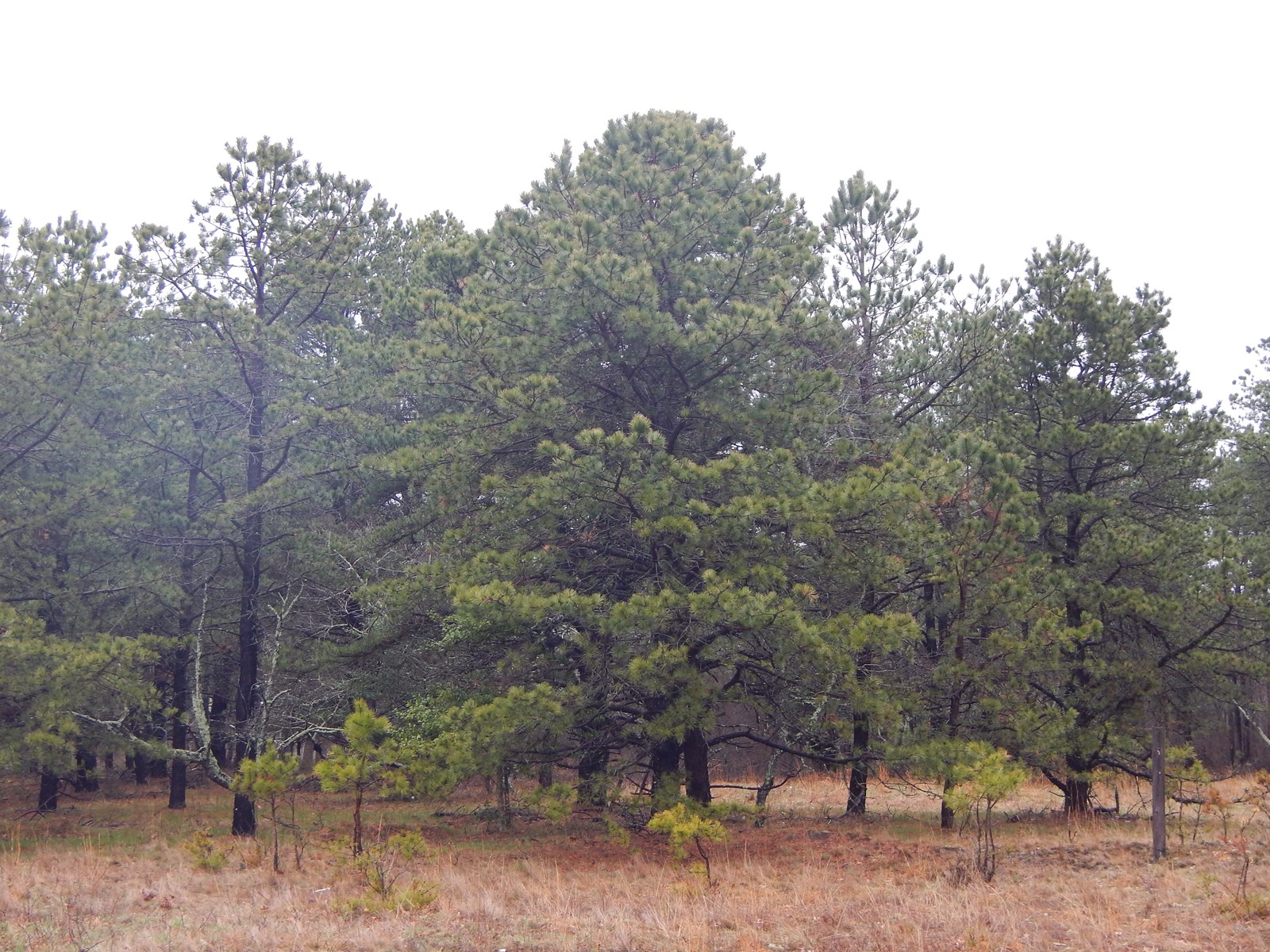 A broad, diverse range of wildlife species also inhabit the Central Pine Barrens. Bald eagles, osprey, white-tailed deer, red fox, weasels, flying squirrels, turkey, box turtles, snapping turtles and turkey buzzards can be found in a variety of habitats. In addition, portions of the area, especially the subregion known as Warbler Woods, provide breeding and resting habitat for dozens of neotropical bird species, a number of which are rare, which migrate to the area from Central and South America in the spring and back in the fall. The coastal barrens buckmoth, a striking black and white striped species of special concern that depends on scrub oak for food and for laying its eggs, is found here. The bobwhite quail, once an important species of game bird found in various parts of New York State, is now found predominantly only in and around the Central Pine Barrens. The Eastern tiger salamander, the largest land salamander in the United States and which is listed as an endangered species in New York and a number of other states, is found in New York only on Long Island, with the majority of its breeding ponds found in the Central Pine Barrens.
A broad, diverse range of wildlife species also inhabit the Central Pine Barrens. Bald eagles, osprey, white-tailed deer, red fox, weasels, flying squirrels, turkey, box turtles, snapping turtles and turkey buzzards can be found in a variety of habitats. In addition, portions of the area, especially the subregion known as Warbler Woods, provide breeding and resting habitat for dozens of neotropical bird species, a number of which are rare, which migrate to the area from Central and South America in the spring and back in the fall. The coastal barrens buckmoth, a striking black and white striped species of special concern that depends on scrub oak for food and for laying its eggs, is found here. The bobwhite quail, once an important species of game bird found in various parts of New York State, is now found predominantly only in and around the Central Pine Barrens. The Eastern tiger salamander, the largest land salamander in the United States and which is listed as an endangered species in New York and a number of other states, is found in New York only on Long Island, with the majority of its breeding ponds found in the Central Pine Barrens.
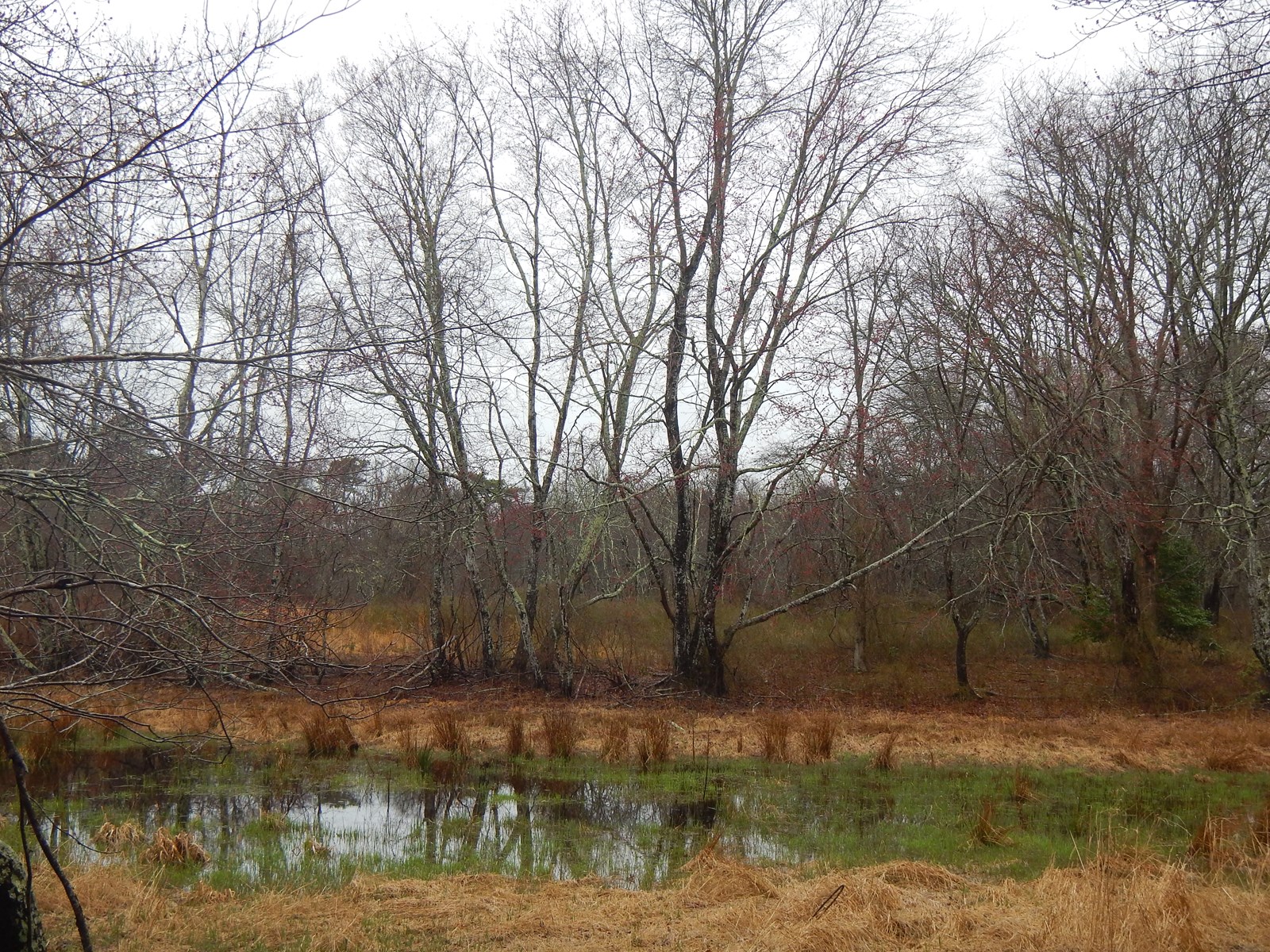
The Central Pine Barrens also overlies a portion of Long Island's federally designated sole source drinking water aquifer in which groundwater provides the only supply of this vital resource. The area is underlain by a significant deposit comprised primarily of sand and gravel which include a hilly terminal moraine and flat outwash plain formed by glaciers during the last ice age. Elevations in the region range from sea level to almost 300 feet.
The Central Pine Barrens region is influenced by maritime forces due to the area’s proximity to the Atlantic Ocean and nearby estuaries including the Long Island Sound and Peconic Bay systems to the north. Climate and weather, especially wind, precipitation and temperature, are all impacted by these factors. The area is also known for its peculiar microclimates where certain pockets in the interior (such as “Icy Hollow,” as it known to the locals) have reported temperatures 5 to 10 degrees Fahrenheit lower than those of surrounding areas (with some of these areas, especially in the hamlets of Ridge and Westhampton, observing frost when other areas are warmer). In fact, local news weather forecasts frequently highlight the colder weather to be expected in pockets of the Central Pine Barrens.
Much of the Central Pine Barrens contains vast areas of preserved land that is open to the public and owned predominantly by New York State and Suffolk County. The region also contains lands protected by other entities including towns and private, non-profit conservation organizations. Wertheim National Wildlife Refuge, Rocky Point Pine Barrens State Forest, David A. Sarnoff Preserve, Brookhaven State Park, Southaven County Park, Sears-Bellows County Park and Quogue Wildlife Refuge are among the many wild lands accessible to visitors.
Agriculture is a prominent industry in the Central Pine Barrens. Numerous farms are located within the region producing a great diversity of goods, including vegetables, strawberries and a wide variety of flowers and nursery stock. There are also horse farms and sod farms. Due to its significant deposits of sand and gravel, mining of these materials is also conducted here.
Although much of the developed portions of the Central Pine Barrens consist primarily of residential communities, there are some major non-residential installations. These include Brookhaven National Laboratory, the only national lab devoted exclusively to peacetime scientific research and the location of the work that led to numerous Nobel prizes; Enterprise Park at Calverton, the former Grumman Aircraft facility at which the famous F-14 Tomcat fighter jets were tested; Gabreski Airport, home of the 106th Rescue Wing whose famed pararescue personnel (“PJs”) have performed rescues around the world under harrowing conditions and who were the main rescue crew for all U.S. Space Shuttle missions, and the headquarters of the American Physical Society, renowned publisher of scientific research papers. In addition, the Eastern Campus of Suffolk County Community College is located in the Central Pine Barrens and two branches of the Long Island Railroad traverse its interior.
Overall, the Central Pine Barrens is a unique and special place which contains a vast array of significant natural and cultural resources worthy of preservation and protection.
To learn more about the Central Pine Barren and to access additional maps visit our online document library.
